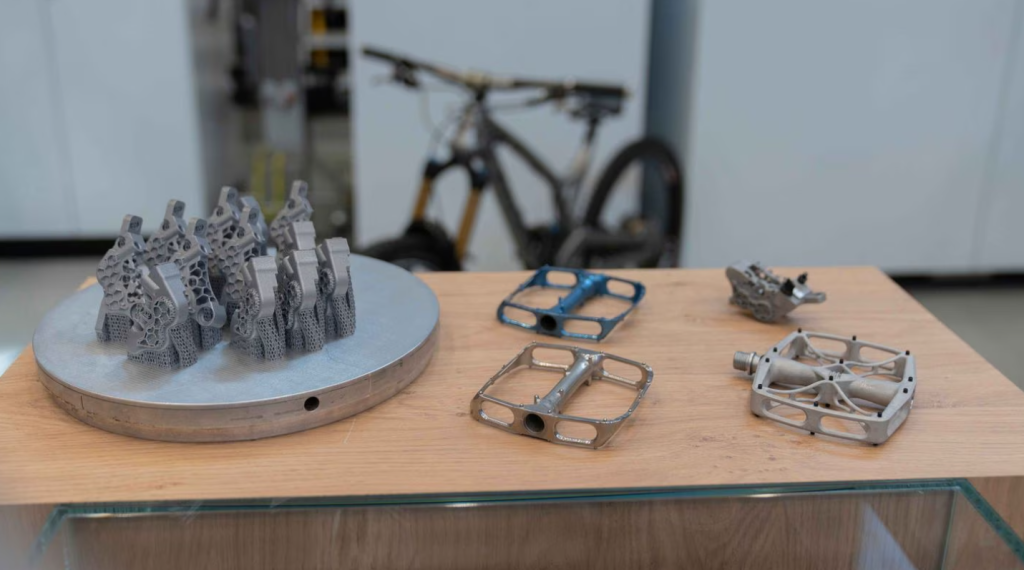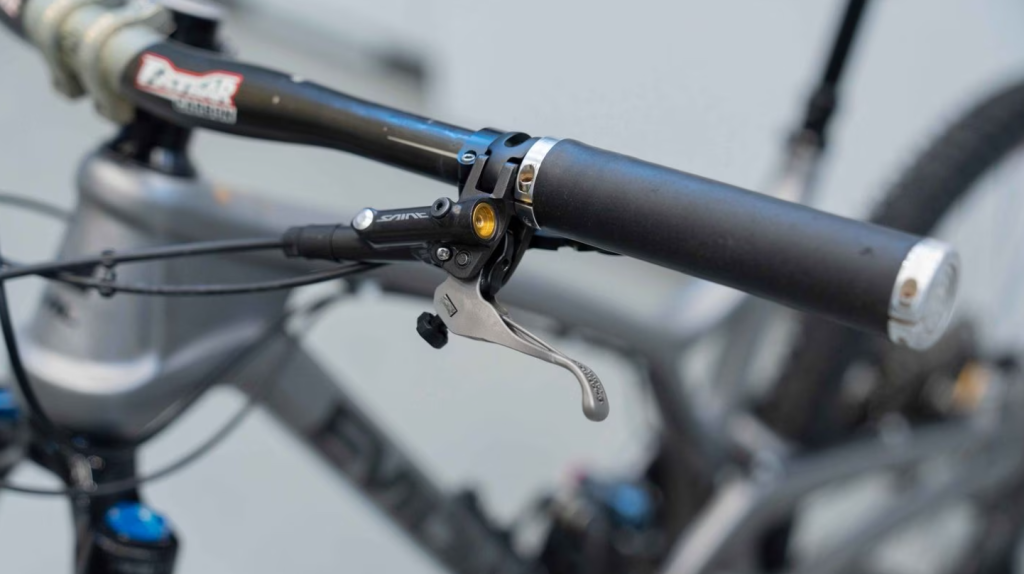AM materials developer Elementum 3D and German machine tool manufacturer TRUMPF have collaborated to enhance INTENSE Cycles‘ M1 downhill race bike.
With over three decades in the bicycle industry, INTENSE Cycles aimed to redesign the bike’s backbone, a pivotal element in improving suspension performance. The task involved crafting a unified backbone from A6061-RAM2 aluminum alloy, incorporating internal ribbing to bolster strength and minimize weight, a task unachievable through conventional machining methods.
Collaborating with TRUMPF, INTENSE capitalized on the company’s AM technologies for printing bicycle components and its expertise in utilizing weldable A6061-RAM2. This project also included leveraging Elementum 3D’s A6061-RAM2 alloy, mirroring the alloy employed in INTENSE’s aluminum frames.
INTENSE Founder and CEO Jeff Steber, said, “I work and ‘think’ in aluminum, so AM opens a new world of creative opportunities for me and my team,” he said. “We say INTENSE merges artistry and engineering, and I am no longer limited to metal sheets and tubes. I have the freedom to create almost any shape I want.”

Improved design for peak performance
The original backbone designs posed challenges for printing, prompting TRUMPF to counsel INTENSE engineers on eliminating low-angle overhangs for better printability. With TRUMPF’s upgraded build processor, “TruTops Print,” downskin printability was enhanced from 45° to 25°, significantly reducing the need for overhang-supporting material. This led to fewer errors, reduced material usage, and minimized post-processing efforts.
Elementum 3D supplied its A6061-RAM2 feedstock material, surpassing performance expectations and seamlessly integrating with TRUMPF’s infrastructure. The material’s exceptional weldability and consistent processability streamlined the development of print parameters, minimizing the number of iterations needed to attain the targeted relative density values.
Christian Lengwenat, TRUMPF application engineer for metal 3D printing, added, “Elementum 3D is professional and responds quickly. It’s comforting to work with a reliable, friendly group. Their advanced material properties and surface finish exceeded our expectations, and we plan to use more Elementum 3D powders in our machines.”
Considering the surface finish and accuracy of the printed parts, both companies found A6061-RAM2 ideal for the project. Once the backbone was welded to the frame, it was difficult to differentiate between printed, machined, or forged parts. Based on this project’s success, INTENSE plans to scale up M1 production for consumers and integrate AM into future projects.
Steber concluded, “I’m thankful for the great work TRUMPF and Elementum 3D provided. Their guidance and expertise played a critical role in successfully producing our new M1. I am happy to report the M1 finished 2nd at the 2023 UCI Cycling World Championships.”

3D printing paves the way for novel bicycles
Additive manufacturing holds significant potential for the bicycle industry, offering increased customization, faster development times, and flexibility in production. With this in mind, many bicycle companies have started using AM to further bolster their bicycle production processes.
Recently, E-bike manufacturers Buddy Bike and Isoco Bikes collaborated with Lehvoss Group to develop the Isoco X1 e-bike, also branded as the Buddy X1, emphasizing sustainability. The thermoplastic frames possess a reported 68% lower carbon footprint compared to traditional aluminum frames and are fully recyclable while remaining lightweight and durable. Additionally, 3D printing was used to prototype some of the ISOCO X1’s components.
Manufactured through a combination of injection molding and fluid injection technology, the frames leverage thermoplastic carbon fiber plastics from Lehvoss, marking the debut of injection-molded carbon composite bicycle frames in the market. As part of the Lehvoss Xtreme-Tech expedition, riders Mike Fuchs, Oliver Gehrking, and David Arlandis are currently testing the bike’s endurance in a 1,300 km journey through North Africa, assessing its suitability for long-distance mountain and road riding.
Another example includes Bright Laser Technologies (BLT), partnering with bicycle manufacturer Titan Super Bond to develop the first fully 3D printed titanium alloy bicycle frame in China and Asia. Titan Super Bond utilized the BLT-A320 machine for high-precision titanium alloy bicycle handlebars and head tubes used for their lightweight, strength, corrosion resistance, and durability.
The high-strength titanium frame enabled efficient power transfer, maneuverability, and superior shock absorption. Metal AM addresses industry challenges, offering precise control and meeting accuracy requirements (0.03mm). Simplifying production, metal 3D printing also reduces cycles by 30%, material costs by over 20%, and labor intensity, paving the way for future automation, says the company.
What 3D printing trends do industry leaders anticipate this year?
What does the Future of 3D printing hold for the next 10 years?
To stay up to date with the latest 3D printing news, don’t forget to subscribe to the 3D Printing Industry newsletter or follow us on Twitter, or like our page on Facebook.
While you’re here, why not subscribe to our Youtube channel? Featuring discussion, debriefs, video shorts, and webinar replays.
Are you looking for a job in the additive manufacturing industry? Visit 3D Printing Jobs for a selection of roles in the industry.
Featured image shows a 3D printed brake lever. Photo via TRUMPF.


